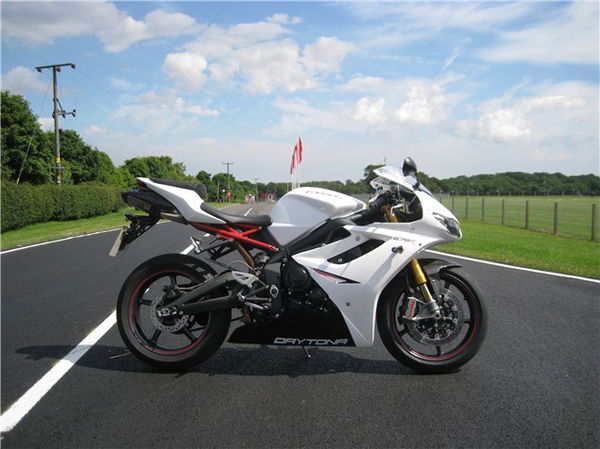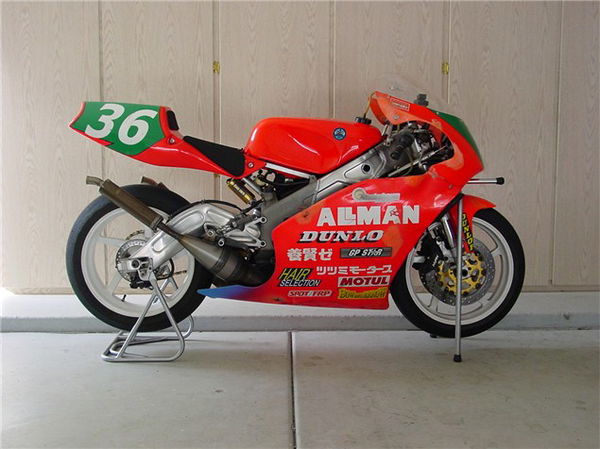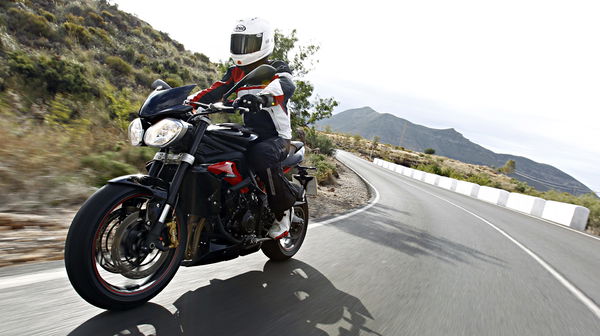Triumph Daytona 675R review: UK roads
Open wide and say R! It's our first ride of Triumph's outgoing 675R


Want to know what the new bike is like? Click here for the 2013 Triumph Daytona 675R review.
When my Euro-millions numbers come up, number one bike-purchase is simple. A modern-era 250GP bike with enough spares kit to keep it sweet and sharp for at least five years.
I’m going to do nothing but track days on it. It’ll be a full wets-on-wheels, tyre warmers, barometer and boxes full of jets affair.
If you’ve never had the 250-pleasure, just consider these two number to get your head round what they must feel like: 95bhp and 95kgs. On hot, sticky slicks is it any wonder that they feel so beautifully balanced, so intuitive and communicative?
Wow, they steer, too. On a good 250, a lap of Donington or Outlon Park’s snaky, flowing, sinuous undulations, gets pretty close to a religious experience. Power-off peel-in points to the millimetre. Apexes and exits on a taut throttle cable to the thou’. 250s are the surgical scalpel where a superbike is that stainless steel slide hammer they remove bone pins with.
My number two purchase is the ten grand 675R Daytona. The R has a 250 feel to it – all front-endy, narrow and stiff. The sort of bike that sucks you into Gerrards at Mallory Park, faster and faster as it eggs you on to carry more speed and more brake. The sort of bike that doesn’t tolerate cack-handedness or laziness. The sort of bike that doesn’t need new rings every few hundred kms.
The Daytona R is a Daytona with Ohlins suspension and Brembo monobloc front callipers. Oh and some carbon bits, a quick-shifter and a paint job. The previous two sentences were prioritised into important and un-important, respectively. The Hinckley firm bill the R as the ultimate track day weapon and I’d agree. It’s wasted on the road.
My licence would be wasted on the road, anyway. I just read a story about some miscreant being nicked for doing 160mph on the road and it reminded me how much I’d like to avoid the same happening to me.
No, like my 250, my Daytona R would be for track use only.
I’d do virtually nothing to it other than some pattern bodywork, crash bungs and a Power Commander. The engine would remain stock-sealed (fast enough) and I’d even leave the whole standard exhaust system on it (Db-meter friendly anywhere).
The brakes would be left un-fiddled with, too. Those Monoblocs are one-finger stoppy material, irrespective of your velocity.
The R’s numbers don’t quite balance like a 250’s but it’s close. 130BHP meets 180kgs.
Crucially, balance is restored because the grip from the Pirelli Super Corsas is not embarrassed by the way it makes its power. Also, like a 250, fun and enjoyment are to be gained from the fact that you can really thrash a 675 whereas on a 1000 you’d be short-shifting and using part throttle a lot. TT data traces put 600s at using 75% of full throttle for a lap. Superbikes? Around 24%.
Any Daytona – R or not - makes its power in a very creamy-smooth fashion. There’s what feels like a smooth, rolling hillock in the power curve – all stacked in the mid-range - and it’s very, very easy to access and control. Connection between the twist grip and butterflies, butterflies and back tyre is very direct.
The fact that the Daytona sweeps another 76cc more than its 599cc four-cylindered rivals makes a big difference when it comes down to where it makes its power and torque. On track, an R6 or CBR is screaming its nuts off mid corner to get a decent drive out of a turn. There’s much more grunt on a Daytona. It’s really, really noticeable, especially at that point in a corner when you start to turn the wick up.
That firing order and crankshaft architecture also play their part. Yes, the torque and the delivery really do get the best out of the tyres.
And when you’re already mid-corner, floating that squirming divide between pain and ecstasy, it’s little things like this that matter. That first application of power as the corner opens up is where the highside bogies lurk.
An ignition interrupter – standard fitment on the R – keeps the bike balanced as the rider shifts up. Keeping the throttle pinned as you change gear avoids any troublesome fore and aft pitching. This way, weight transference is pretty static and the behaviour of the bike far more predictable as a result.
My Daytona R track-day fest’ would be spoiled by those forks, though. Yes, they’re Ohlins and yes, they look trick but there’s not enough adjustment range to stop them flattening themselves against their bump-stops when you’re using those Monoblocs how they were intended. Even using it on the road, they feel like they’ve got woefully soft springs and compression damping. Paddock Hill entry on a flying lap would be a nightmare.
The forks would be the first thing ripped out of my brand new 675R. Ktech would definitely be getting a call for a strip and re-shim, re-spring service. The TTX rear shock, however, would be left alone on the basis that it’s much better than I am.
Then, once I’d got my forks back, bolted my pattern panels on and checked the tyre pressures, I’d be ready for my first track day. You can keep your superbikes or your 750s. The Daytona 675R is my preferred track day tool.












